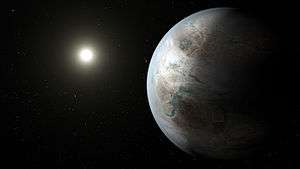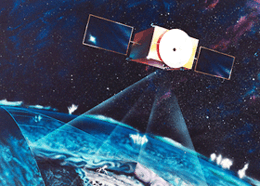EPIC 2037 c
| Exoplanet | List of exoplanets
| |||||
|---|---|---|---|---|---|---|
| Parent star | ||||||
| Star | EPIC 2037 | |||||
| Right ascension | (α) | 16:10:18.0[1] | ||||
| Declination | (δ) | -24:59:25[1] | ||||
| Distance | 590.343±55.4466 ly (181.0 (± 17.0)[1] pc) | |||||
| Mass | (m) | 1.12 (± 0.05)[1] M☉ | ||||
| Radius | (r) | 1.21 (± 0.11)[1] R☉ | ||||
| Temperature | (T) | 5743.0 (± 60.0)[1] K | ||||
| Metallicity | [Fe/H] | 0.42 (± 0.04)[1] | ||||
| Age | 5.0 (± 1.8)[1] Gyr | |||||
| Physical characteristics | ||||||
| Mass | (m) | 27.0 ± 6.9[2] M⊕ | ||||
| Radius | (r) | 7.82 ± 0.72[2] R⊕ | ||||
| Density | (ρ) | 310 ± 120 kg m−3 | ||||
| Temperature | (T) | 606.0 K (332.9 °C; 631.1 °F) | ||||
| Orbital elements | ||||||
| Semi-major axis | (a) | 0.247 (± 0.004)[1] AU | ||||
| Eccentricity | (e) | 0[1] | ||||
| Orbital period | (P) | 42.3633 (± 0.0006)[1] d | ||||
| Inclination | (i) | 89.76 (± 0.2)[1]° | ||||
| Discovery information | ||||||
| Discovery date | Nov. 17, 2015 | |||||
| Discoverer(s) | PETIGURA E., HOWARD A., LOPEZ E., DECK K., FULTON B. et al.[1][2] | |||||
| Discovery method | Transit | |||||
| Discovery site | Kepler Space Observatory | |||||
| Discovery status | Confirmed | |||||
EPIC 2037 c[1] also known as EPIC 203771098 c is an exoplanet orbiting the Sun-like star EPIC 203771098 every 42 days. It has a density far lower than that of Saturn,[2] which indicates that the planet is clearly a gas giant.
References
This article is issued from Wikipedia - version of the 10/27/2016. The text is available under the Creative Commons Attribution/Share Alike but additional terms may apply for the media files.




